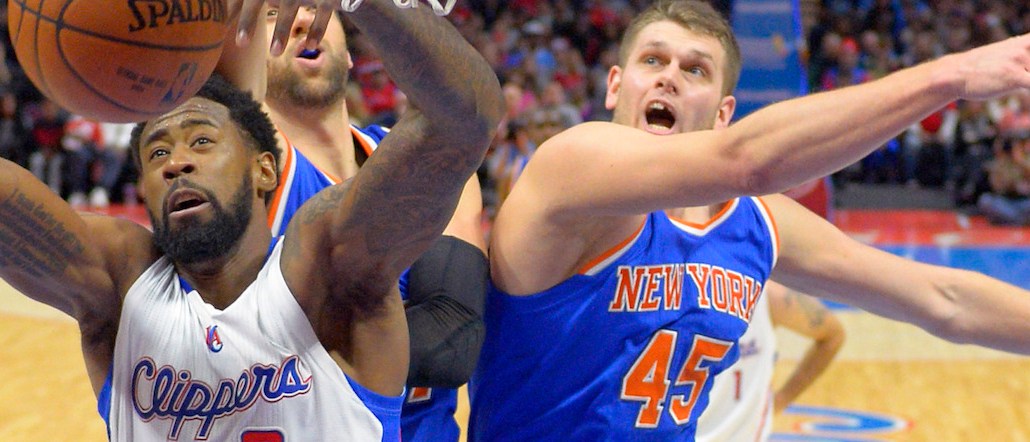‘I was more of a journalist than spectator’: Anatomy of an agency CEO’s viral tweet

As the CEO of agency Deep Focus, Ian Schafer has made a career out of crafting shareable content. Sometimes a man meets a moment.
Last night, Schafer happened to be in perfect position to capture the tussle between former Knick Charles Oakley, once one of the NBA’s foremost enforcers, got into a fight with Madison Square Garden security guards at the Knicks-Clippers game. Schafer sprung into action with his iPhone, capturing a minute and two seconds of the rumble.
Within 10 seconds after he recorded the incident, he uploaded the video on Twitter, and it immediately bounced around the Internet. The tweet immediately garnered an average of 20,000 views per minute, according to Schafer. As of Thursday afternoon, it has more than 11,000 likes and 11,350 retweets. Within 24 hours, almost every major news outlet in the U.S. — including CNN, ESPN, New York Times and Fox News — reached out to Schafer for video permission.
“It’s fascinating to see how journalism plays out. I received loads of interview requests this morning not only for this tweet but also for Twitter’s earnings,” said Schafer. “Last night was crazy. Right after I posted the video, I heard people around me at the stadium asking ‘Who is Ian Schafer?’ And then a guy came to me saying ‘Are you Ian Schafer? Your tweet is all over the internet.’”
Soooooo Charles Oakley just got into a fight at he Knicks game. pic.twitter.com/klZBD89VI7
— Ian Schafer (@ischafer) February 9, 2017
Schafer explained that this viral tweet is more about the right place at the right time than anything else. When he noticed that Oakley sat behind James Dolan, Knicks boss and chairman for Madison Square Garden, he suspected that something would happen given the rocky relationship between the two. Around 15 minutes into the game, five or six security guards walked to where Oakley was sitting and Schafer started wondering if he should document the whole thing and post it on social, knowing that nothing beneficial will happen to both Oakley and Knicks.
“I love both him and the team. As a fan, I don’t want to be that guy,” said Schafer. “I told my friend If I do this it will blow up because I have a verified account and I’m followed by reporters who will potentially broadcast, but I will let someone else to do this.”
But when Oakley fought back, Schafer took out his phone and recorded for a little over one minute. “At that moment, I was more of a journalist than spectator,” he said. “So I made the decision to document this.”
The inner marketer in Schafer also told him that he should film the scene vertically, not horizontally. “Lots of case studies for clients show that more people complete watching a video on their phone when it is filmed vertically with sound on,” he said.
The heated incident was also captured on TV camera. As a marketer, Schafer knew how to frame the clip, chose the right platform and had the kind of influential, media-type followers who would spread it. Schafer has been actively posting on Twitter since 2007, where he has 22,000 followers and constantly shares his thoughts on politics, sports and entertainment with a sense of humor. For Schafer, Twitter is the best place to share real-time news, while Facebook does not have the same sense of urgency in the face of breaking news and Snapchat does nothing good in this type of situation.
“Twitter is where people turn for something happening now,” he said. “And this news was breaking.”
While feeling good to make something go viral on the internet, Schafer doesn’t forget to have some fun with rights management. He doesn’t ask for financial compensation from news organizations in exchange for video permission, but he does have specific requests for each. For instance, he asked New York Post to send a “I love you” letter to its publisher and his longtime friend Jesse Angelo. And he asked reporter Mike LaMara, a Yankee fan, to sing “Meet the Mets.”
And one regret at his most popular tweet to date:
https://twitter.com/ischafer/status/829531385044070401
More in Marketing

Hyve Group buys the Possible conference, and will add a meeting element to it in the future
Hyve Group, which owns such events as ShopTalk and FinTech Meetup, has agreed to purchase Beyond Ordinary Events, the organizing body behind Possible.

Agencies and marketers point to TikTok in the running to win ‘first real social Olympics’
The video platform is a crucial part of paid social plans this summer, say advertisers and agency execs.

Where Kamala Harris and Donald Trump stand on big tech issues
The next U.S. president is going to have a tough job of reining in social media companies’ dominance and power enough to satisfy lawmakers and users, while still encouraging free speech, privacy and innovation.








